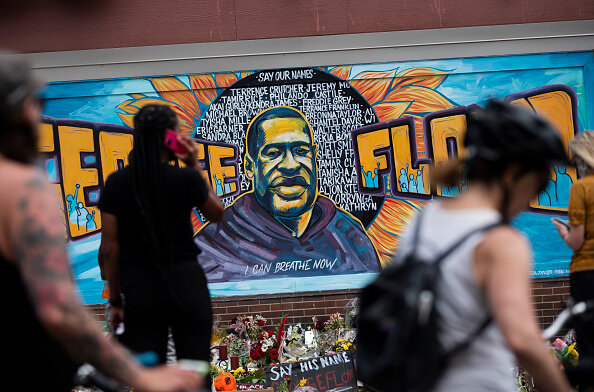
Police violence against communities of color. Mass shootings directed at Asians, Jews, Sikhs, Latinos. Sexual harassment. Such stories, challenging for all journalists, can be uniquely fraught for reporters covering violence or abuse directed at their own communities.
When it comes to reporting on identity-based victimization and trauma, journalists’ own identity is never neutral. Reporting on individuals or communities with whom we identify — whether because of our race, ethnicity, gender, sexuality, age or other factors — raises the stakes, and can be a source of both insight and vulnerability. We need to lean into that conversation.

On the positive side, reporting on our own identity groups and communities can be a powerful source of motivation, and a route toward reinventing the news agenda. In the aftermath of the murder of George Floyd and Breonna Taylor, for instance, African American journalists drove a widespread reckoning with the news industry’s historic racism and inadequate reporting on white supremacy. For women in journalism, #MeToo reporting has inspired a similar reckoning worldwide.
But psychologists’ studies of journalists also reveal that reporting on traumatic events affecting people whom we identify with carries some emotional hazards. Reporters on such assignments may experience unusual levels of short-term emotional distress; a reawakening of our own fears or prior personal experiences of trauma; or be reminded of abuses endured by our own family or community members. In particular, studies suggest that such personally-connected trauma-facing reporting is a risk factor for post-traumatic stress disorder, the cluster of psychological responses to violence and threat that can significantly impair journalists’ occupational capacity and personal life.
Happily, journalists can take significant steps to buffer the toxic impact of trauma, and to maximize resilience for reporting when assignments and our own lives collide in evocative, disturbing ways.
It all starts with a simple, consistent self-care plan, as important a part of the journalistic toolkit as a notebook and camera. A good self-care plan involves a regular routine to give our journalistic brains a chance to recover from stress, graphic imagery and the traumas we absorb from sources, documents, photos, user-generated content and the news cycle. This is especially important when the events we are reporting, hearing about or looking at threaten us personally in some way.
Effective self-care strategies for trauma-facing reporting include:
Know your own signs. Recognize when you are working well, when you’re stressed out, and whatever strategies have helped you cope with stress and adversity in the past.
Lower your neurological arousal. Regular aerobic exercise, yoga and meditation all help the brain metabolize stress and trauma. Extensive research shows their value in building resilience for frontline professionals.
Process your reporting. Some reporters keep a work journal. Others debrief daily with colleagues during difficult assignments: what went well, what’s been challenging, what are we doing tomorrow?
Put your phone away. Technology is powerful, but overdependence on devices, alerts and social media can keep us in a dangerous cycle of arousal and doomscrolling — which can be especially problematic when social media is flooded with hate and polarization. Set up no-technology buffer zones around bed and family time, and take breaks during the day.
Actively maintain your peer support network. Research shows that social and collegial connection is the single factor most associated with journalists’ resilience, and social isolation is associated with PTSD and burnout. On a trauma-inflected project, reporters can easily become isolated or lost in the story, so take extra steps to keep your collegial engagement active. For identity-based trauma, seek out trusted colleagues and mentors who share your experience.
Stick to your principles, support your colleagues and stand up to newsroom insensibility. Research shows that a strong, articulated sense of mission and ethical standards contribute to journalists’ resilience. By contrast, reporters who feel that they or their newsrooms have fallen short, or contributed to the injustices against their communities, can experience what psychologists call “moral injury,” heightening distress and exacerbating issues like PTSD.
Pace your trauma load. Even while reporting on demanding stories, take time every day for yourself: getting other images in your head, engaging in nourishing activities, making positive connection with people you care about. Manage the flow of graphic user-generated videos. Allow for changes of task during the day, to give yourself mental recovery time, and balance difficult trauma stories with other reporting that engages different muscles.
Get help if you need it. If you find images of traumatic events intruding in unwanted ways, or if you feel less able to concentrate, get along with others or simply connect with your work — talk to someone about it. We all have good days and bad days, but persistent changes lasting weeks or months can lead to real professional impairment. So get help. Trauma-informed psychotherapy with a well-trained clinician has a strong track record in helping news professionals. But pastors, professional mentors and others you trust can make a difference too.
If reporting on trauma is getting under your skin, or changing you in ways that you don’t like, the most important advice is: don’t go it alone.



